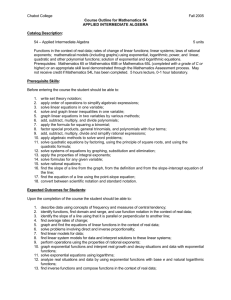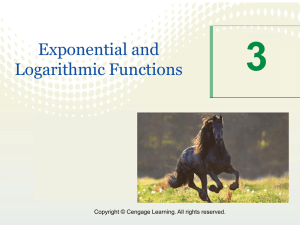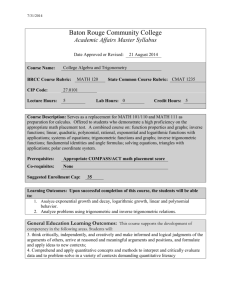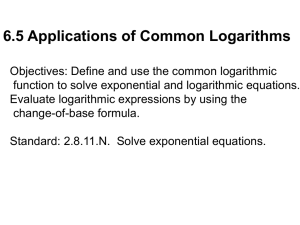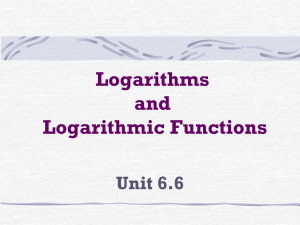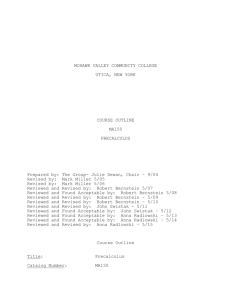Word document
advertisement
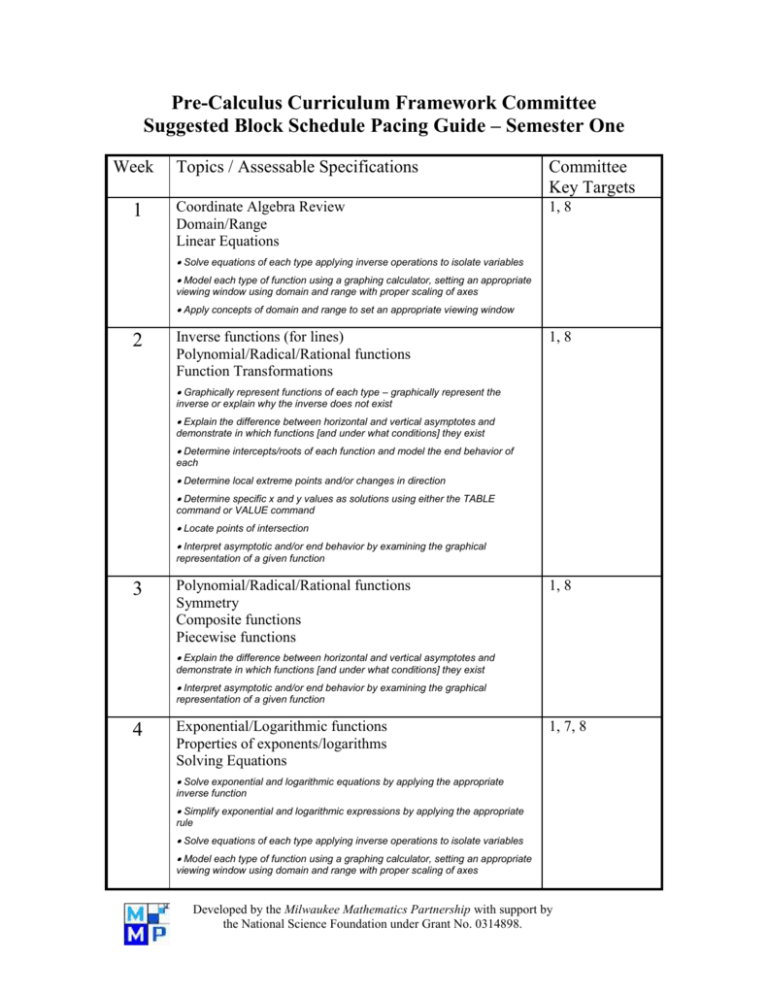
Pre-Calculus Curriculum Framework Committee Suggested Block Schedule Pacing Guide – Semester One Week 1 Topics / Assessable Specifications Committee Key Targets Coordinate Algebra Review Domain/Range Linear Equations 1, 8 Solve equations of each type applying inverse operations to isolate variables Model each type of function using a graphing calculator, setting an appropriate viewing window using domain and range with proper scaling of axes Apply concepts of domain and range to set an appropriate viewing window 2 Inverse functions (for lines) Polynomial/Radical/Rational functions Function Transformations 1, 8 Graphically represent functions of each type – graphically represent the inverse or explain why the inverse does not exist Explain the difference between horizontal and vertical asymptotes and demonstrate in which functions [and under what conditions] they exist Determine intercepts/roots of each function and model the end behavior of each Determine local extreme points and/or changes in direction Determine specific x and y values as solutions using either the TABLE command or VALUE command Locate points of intersection Interpret asymptotic and/or end behavior by examining the graphical representation of a given function 3 Polynomial/Radical/Rational functions Symmetry Composite functions Piecewise functions 1, 8 Explain the difference between horizontal and vertical asymptotes and demonstrate in which functions [and under what conditions] they exist Interpret asymptotic and/or end behavior by examining the graphical representation of a given function 4 Exponential/Logarithmic functions Properties of exponents/logarithms Solving Equations 1, 7, 8 Solve exponential and logarithmic equations by applying the appropriate inverse function Simplify exponential and logarithmic expressions by applying the appropriate rule Solve equations of each type applying inverse operations to isolate variables Model each type of function using a graphing calculator, setting an appropriate viewing window using domain and range with proper scaling of axes Developed by the Milwaukee Mathematics Partnership with support by the National Science Foundation under Grant No. 0314898. 5 Growth/Decay Graphs Exponential/Logarithmic models 1, 7, 8 Solve exponential and logarithmic equations by applying the appropriate inverse function Apply exponential growth and decay models [A = P(1 + r)t, A = Pekt] to solve for any variable Simplify exponential and logarithmic expressions by applying the appropriate rule Graphically represent exponential/logarithmic functions, expressing one as the inverse of the other Create an exponential/logarithmic solution model given a real-world application Graphically represent functions of each type – graphically represent the inverse or explain why the inverse does not exist Model each type of function using a graphing calculator, setting an appropriate viewing window using domain and range with proper scaling of axes 6 Review Factoring Techniques/Rules of Exponents Polynomial Functions Solving Equations with Radicals 1 Solve equations of each type applying inverse operations to isolate variables Model each type of function using a graphing calculator, setting an appropriate viewing window using domain and range with proper scaling of axes Determine local extreme points and/or changes in direction 7 Synthetic Division Polynomial roots (Rational Root Theorem) 1, 8 Graphically represent functions of each type – graphically represent the inverse or explain why the inverse does not exist Explain the difference between horizontal and vertical asymptotes and demonstrate in which functions [and under what conditions] they exist Determine intercepts/roots of each function and model the end behavior of each Determine local extreme points and/or changes in direction 8 End Behavior/Asymptotes Complex number introduction/Review 1, 8 Explain the difference between horizontal and vertical asymptotes and demonstrate in which functions [and under what conditions] they exist Determine intercepts/roots of each function and model the end behavior of each Add, subtract, multiply, divide and exponentiate complex numbers Demonstrate the graphical representations of complex numbers in standard and trigonometric forms 9 Term Review Developed by the Milwaukee Mathematics Partnership with support by the National Science Foundation under Grant No. 0314898.





